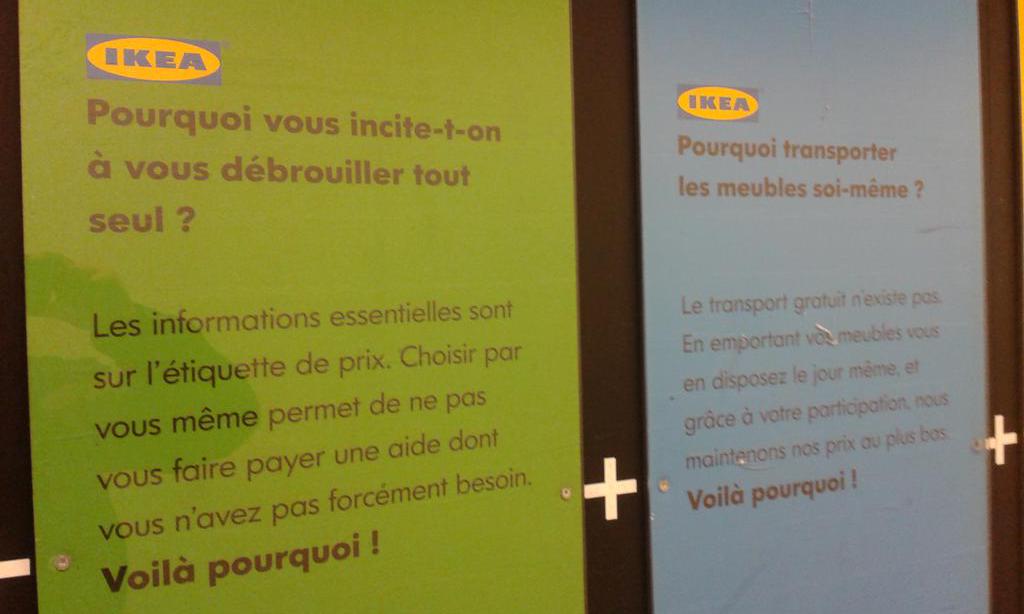Customer Relationship Management is I believe a tool that is not well used by most of retailers. Indeed, as retailers are working with mass market products, it is difficult to leverage the potential of marketing one to one while the volume matters the most. Nevertheless, there are some retailers, like Tesco, that have been thriving thanks to their CRM programs.
Let's not forget that retailers own large data base of customer data, that give them a pretty good sight of what their clientele is about.
The quaterly mailer
It is a mail send by post, including 12 coupons. They advertize new products at the beginning of the mailer, to let the heavy sellers for the end of the mail. As the article says Eighty percent of dunnhumby’s effort is focused on what it knows about a customer and 20 percent is focused on discovery. What is interesting in this concept, is that it mixes both customer's will and retailers' strategy.
Give To The Customers The Products They Want
This is one of the key to Kroger's customer relationship management program. Most of the time, direct marketing campaigns are designed to upsell, and to propose products the customers would not get naturally (in order to maximize return on investment by solliciting added sales). But as a matter of fact, in order to have a trustworthy program, it is important to propose to customers the products they really need. It secures also for the company high transformation rates.
“We see in the next six weeks [after a mailing] 71 percent of households will redeem at least one coupon in the store, Nishat Mehta, executive vice president of global partnerships for dunnhumby, said. The coupons have generated $10 billion in revenue for Kroger."
Having a high percentage rate of redemption is important to make sure the marketing support remains efficient on the long run.
unlike other grocery stores which will offer a Pepsi coupon to a Coke buyer, dunnhumby doesn’t try to convert customers. It may offer an adjacent products, but both in the store and in its mailers, if offers coupons for product the customers already likes.
If Pepsi sends coupons to Coke households, the redemption rate is very low,” said Mehta. “We have struggled over this with manufacturers (who pay for the coupons). They ask why they should send coupons to households that already buy their products. That has forced us to be very data-heavy and analytical, so we tracked 100,000 households we sent coupons to and looked at their purchases over the next 16 and 26 weeks.” It showed a sales lift among shoppers loyal to a brand when they had an offer from the brand.
Now, I don't think that the return on investment is high by using such techniques, but in order to gain market shares, raise sales and create customer satisfaction with a low marketing cost, I am sure it makes a lot of sense to give what customers want from you, in terms of one to one marketing technique.
Segment customers upon purchases and not on demographics
An easy and traditionnal way to segment a market is to use demographics data. But in our nowdays world, you can't get the essence of what one customer really want only by relying on his age and his social class. The FMCG world has evolved too much to rely on those. This is the reason why this CRM program tries to analyze customers' data in order to perceive better customers behaviors.
So dunnhumby creates a DNA on each customer, rather than cramming customers into segments, to see what drives their behavior — do they have kids, do they skew toward healthy or fun, do they like organic or convenience, and where are they price sensitive — across all products or only on some.
“We make decisions not based on what you bought today but what you have bought over the last two years,” Mehta said. “We can recommend a product you buy every four months. You don’t have to know, but we know.”
Milk case study and how CRM data may Impact Merchandising
Milk, for example. dunnhumby tells its grocery store clients to organize it for customer convenience by fat content and size of package, so all the one percent half gallons are together and customers can buy on price or easily move to a different brands if their favorite is out of stock.
“It is more expensive for the retailer,” said Mehta, “but you can’t just let the manufacturer stock it the way they want. This helps a customer find the product or find an adjacent product.” That style of stocking carries throughout the store where one product can easily substitute for another.
Understanding loyalty is key to making good decisions for customers. Mehta says if a grocery store doesn’t have his flavor of Chobani Greek yogurt it is apt to lose his total sale. Kosher butter may be a low revenue producer, but for some customers, its absence means they will take their business to another store.
This is something important I would like to link with the Direct Profit By Products strategy I have discussed in this blog. As I have said, it is important to understand beyond the direct profit of one product the marketing importance of one segment. It is by those kind of products you may make a difference and create long term loyalty to your store. Obviously, as a lot of big sellers with low margin (which secures high traffic and high volume but where you lose money), those low selling niche market products may have a cost, but also secures your marketing differenciation.
























